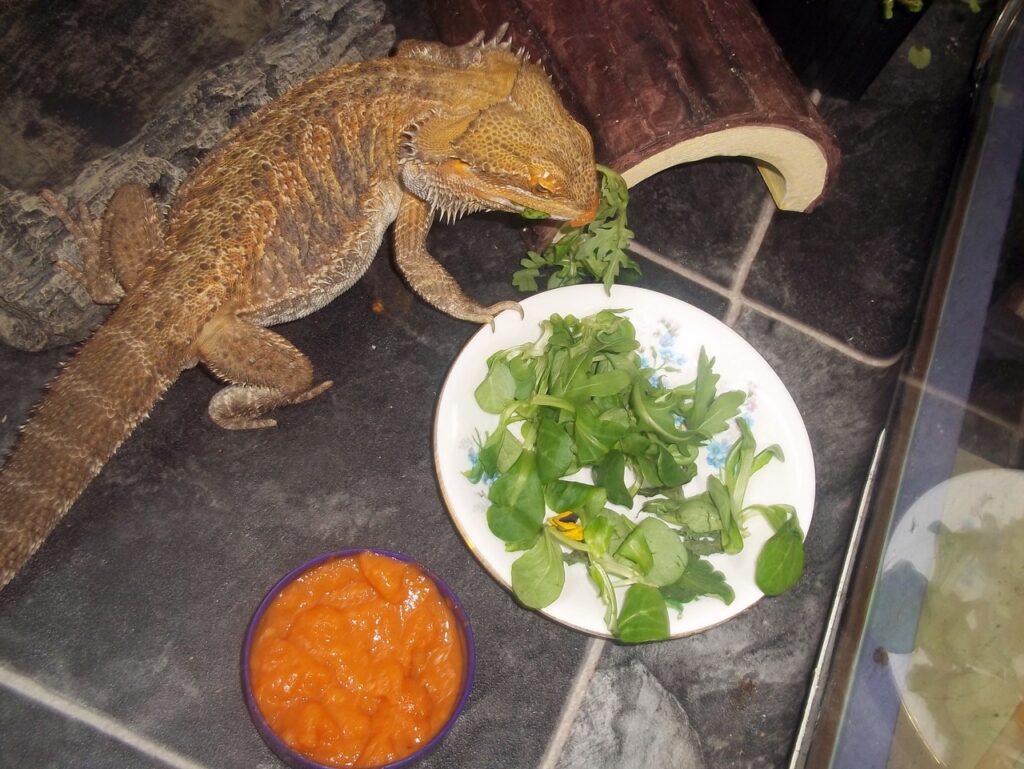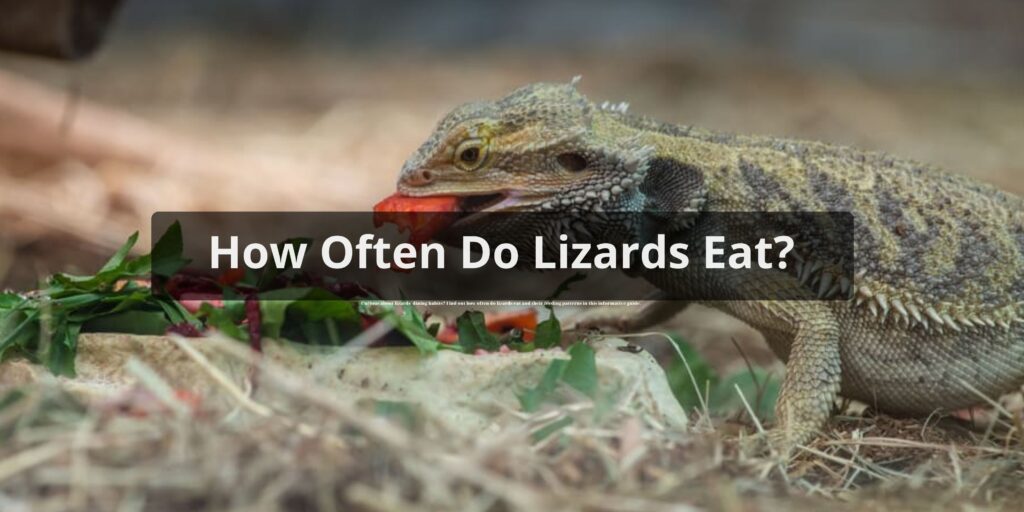Lizards are fascinating reptiles that come in all shapes and sizes. One aspect of lizard care that owners need to understand is their feeding habits and requirements. So how often do lizards need to eat? The answer depends on the specific type of lizard.
Feeding Frequency for Common Pet Lizards
- Leopard Geckos – Juveniles should be fed daily while adults can eat every other day. They are insectivores that enjoy mealworms, crickets, and roaches.
- Bearded Dragons – Young dragons need live feedings 2-3 times per day. Adults eat veggies and insects once or twice daily. They require a varied diet of bugs, leafy greens, veggies, and fruits.
- Crested Geckos – These lizards eat a powdered diet mixed with water. They lick this food from dishes 2-3 times per week. Some owners also provide live insects a few times monthly.
- Green Anoles – Ideally fed daily while young, every other day as adults. Crickets and small insects are staples. Dust food with calcium/vitamin powder 2-3 times weekly.
- Blue-Tongued Skinks – As babies offer food daily. Adults eat every 2-3 days. Omnivores that need insects, greens, fruits, proteins.
- Chameleons – Eat live prey daily when young, every 2-3 days for adults. Locusts, crickets, worms are typical fare. Light mistings of water required too.
- Iguanas – Juveniles dine on bugs/veg daily. Adults eat greens/veg supplemented with insects 2-3 times weekly. Fresh water must be available.
- Savannah Monitors – Hatchlings eat daily. Yearlings and adults every 2-3 days. Rodents, bugs, eggs make up their carnivorous menu.
Why Feeding Frequency Varies
Lizards come in all different sizes, life stages, and have unique nutritional requirements. Here’s why feeding frequency varies:
- Babies Need More Food – Just like any animal, baby lizards need to eat more frequently to fuel growth and development. Their tiny stomachs empty quicker too.
- High Metabolism When Young – Younger lizards have a faster metabolism that calls for greater calorie intake. This metabolic rate slows with maturity.
- Size of the Species – Larger lizard species don’t require meals as often. There are exceptions though, like growing tegu lizards that eat daily.
- Age and Life Stage – Mature adult lizards don’t need the same feeding frequency as rapidly growing juveniles and hatchlings.
- Digestion Time Varies – Some lizards like iguanas are hindgut fermenters. Their complex guts take longer to digest food fully.
- Dietary Differences – Obligate carnivores generally eat more often than lizards with vegetable/omnivorous diets. Digestion of meat is faster.
- Environmental Temperatures – Warmer temperatures in enclosures speed up a lizard’s metabolism. Colder temps may necessitate less frequent feedings.
Signs Your Lizard Needs More Food

Watch for these clues that your lizard may need more frequent meals:
- Loss of body weight or muscle mass
- Lethargy, weakness, or inability to catch prey
- Constantly on the hunt for food in enclosure
- Displaying territorial behavior around food dish
- Eating very quickly and eagerly when fed
- Loss of fat pads around head and neck
- Changes in tail width
- Constipation
- For breeding females – lack of weight gain or egg development
Be sure to research the specific needs of your lizard species. It’s also a good idea to discuss optimal feeding frequency and diet with an exotics vet. Nutrition is incredibly important for your pet reptile’s health and wellbeing!
Conclusion
How often lizards eat depends on many factors like size, age, and species. Most require daily to weekly feedings. Young lizards tend to need more frequent meals for growth and their faster metabolisms. Mature adults usually eat less often. Observe your pet’s appetite, weight, and behavior to fine-tune feeding schedules. Provide a balanced diet according to your particular lizard’s needs. With proper nutrition and care, your scaly friend can live a long, healthy life!
FAQs
Is there a specific schedule lizards follow for eating?
Lizards typically don’t adhere to a strict schedule for eating. Their feeding frequency can vary based on factors like species, age, and environmental conditions. Many lizards are opportunistic feeders, eating when prey is available rather than following a fixed timetable.
Can you overfeed or underfeed a pet lizard?
Yes, it’s possible to both overfeed and underfeed pet lizards. Overfeeding can lead to obesity and health issues, while underfeeding can result in malnutrition. It’s crucial to research your lizard species and establish an appropriate feeding regimen to maintain their health.
How do lizards in the wild find their food regularly?
Wild lizards rely on their natural instincts to find food. They use keen senses, like sight and smell, to locate prey. They often employ hunting strategies, such as ambush or active foraging, to secure their meals. Adaptation to their specific habitat guides their hunting behavior.
Do baby lizards have different feeding patterns than adults?
Yes, baby lizards typically have different feeding patterns than adults. They often require more frequent meals due to their rapid growth. Additionally, their prey size and types may differ, as they need smaller, more manageable prey items until they grow larger.
What are some signs that a lizard may be hungry?
Signs that a lizard may be hungry can include increased activity, prowling behavior, or tongue-flicking to detect scents. Some lizards may become more responsive to movement, indicating their readiness to hunt. It’s essential to observe your lizard’s behavior to recognize these hunger cues and feed them appropriately



